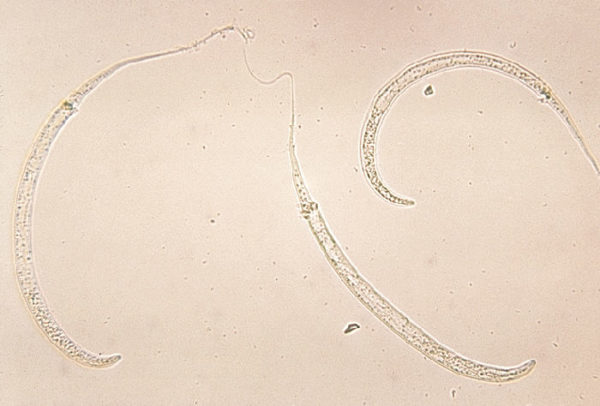Although it was just a few decades ago that Guinea-Worm-Disease (GWD) was affecting an estimated 3.5 million people, the New York Times (NYT) claims South Sudan’s halting of this worm may lead it to be the only disease in history other than smallpox to be fully eradicated worldwide. According to the Centers for Disease Control and Prevention (CDC), it will also be the first parasitic disease to ever be eradicated worldwide. South Sudan’s health minister, Dr. Riek Gai Kok, announced in mid-March that the country had managed to halt the spread of GWD within its borders. The country has not had any cases in over 15 months, which is longer than the worm’s life cycle, but the World Health Organization (WHO) will not certify the country as worm-free until there have been no cases for at least three years.
According to the WHO, GWD is caused when parasitic worms called Guinea Worms (Dracunculus medinensis), migrate through peoples’ subcutaneous tissues. The worms eventually emerge from the body, usually out of the feet, and cause painful blisters and an ulcer, accompanied by a burning sensation in the infected area, fever, nausea, and vomiting. An adult female Guinea Worm carries approximately 3 million embryos, and can be made to explode suddenly when the infected area comes into contact water. Water causes the worm to contract and burst, sending hundreds of thousands of larvae into the water and often causing the person infected to develop a secondary bacterial infection at the site of expulsion. Once in the water, the larvae are often ingested by Copepods, where they can develop to infective third-stage worms in just two weeks. When a person consumes contaminated water, the Copepods are dissolved by the stomach’s gastric acid, releasing larvae that can migrate through the intestinal wall. The male and female worms mate after a few months, and the male dies in the tissue while the female moves down through the muscle planes, eventually emerging from the body after approximately one year of infection to repeat the life cycle.
Image Source: Tony Karumba
Although GWD is rarely fatal, there is currently no drug that can prevent or cure the disease, and those infected often remain sick for several months. As reported by the NYT, treatment includes attempting to pull every worm out of the body, which can often take weeks. The CDC considers the disease a neglected tropical disease (NTD) and found most commonly in poor and remote communities throughout Asia and Africa that do not have clean drinking water.
According to the CDC, teaching people the following measures can help prevent the disease: drink water only from sources free of contamination or treat/filter drinking water from unsafe sources, prevent infected people and dogs from entering bodies of water used for drinking, and educate people to cook their fish well and bury fish entrails. The NYT reveals that efforts to eradicate the worm have been led by the Carter Center, a philanthropy founded by former U.S. President Jimmy Carter. The Carter Center’s Guinea Worm Eradication Program recruits volunteers to go to affected villages and pour mild pesticides into the ponds to kill the Copepods, distribute cloth filters to remove infected Copepods from the ponds, prevent infected people from walking into the ponds, and more.
Since 1986, the incidence of Guinea-Worm-Disease has dropped by over 99.99%, and according to Kok, “future generations will… read of Guinea worm in the books as history.”
Feature Image Source: Dracunculus medinensis larvae by CDC/Dr. Mae Melvin










